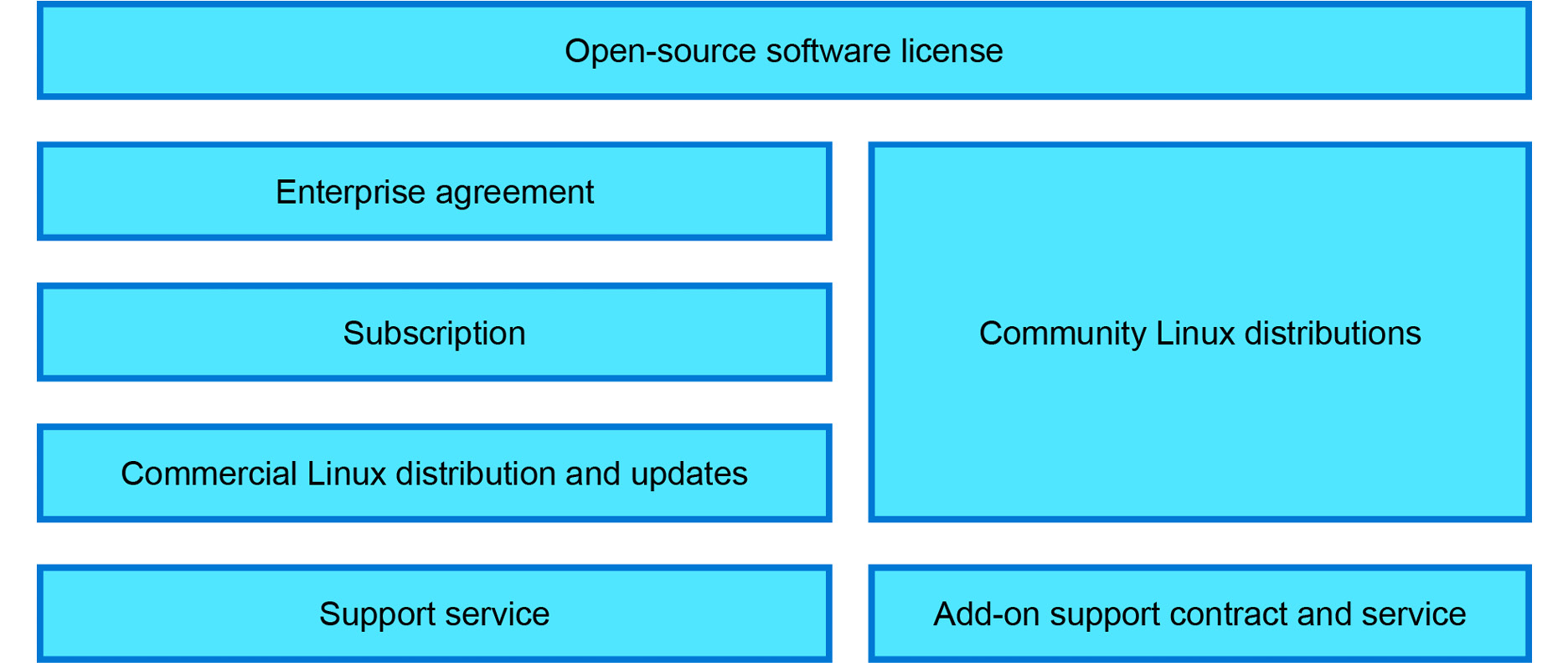Linux licensing and open-source business models
This section focuses on commercial Linux distributions. If you are using only free community editions of Linux, such as CentOS or Debian, some of the content may not be applicable to you.
Open-source licenses
How do you make money from something that is free? To answer that, we must look back and see what it means when we say something is open source.
Linux distributions and the Linux kernel are open source, but at the same time, they are covered by copyright laws. To make things very complicated, there are numerous open-source licenses covering different parts of a Linux distribution. Some components may be covered by a GNU General Public License (GPL), some by an Apache License (APL), and some by an MIT license. To make this even more complex, it is important to realize that there may be multiple versions of the same license and that they may not all be compatible with each other or with any other license whatsoever.
At this point, it is enough to understand that all Linux distributions are covered by an open-source license. This means you have the right to download the source code of all the software included in a Linux distribution. What you can do with the source code is out of the scope of this book, since we are not creating our own Linux distributions. In this book, we do not have to go into the details of various open-source licenses and copyright laws.
Enterprise agreements
When talking about commercial open source, and specifically commercial Linux distributions, the term enterprise agreement is something you will need to familiarize yourself with before thinking about moving your Linux servers to Azure. We might often skip reading the terms and conditions of such agreements before accepting them with a simple click of a mouse, but it's important to read them.
An enterprise agreement for commercial Linux vendors typically states that you agree to pay to use their software according to their latest price lists and to follow the rules of where and how you can use the software. It also says many other things, but since this is not a software procurement book, we will not go into those details. However, it might make sense for you to have a conversation with your software purchasing team to check if they know the contract details.
Linux subscriptions
What proprietary software vendors call "licenses" can be loosely referred to as "subscriptions" in the Linux world. Technically these are, of course, two different things, but in a typical sales conversation, you may hear someone talk about Linux licenses—and as we learned earlier, those are not the licenses you are looking for.
Subscription practically means the right to download, use, and update a commercial Linux distribution. It very often also comes with a technical support service with varying service level agreements. In order to subscribe to such a service, you will need to sign a contract with a commercial Linux vendor on behalf of your employer. This contract is usually referred to as an enterprise agreement, and it typically comes with some additional obligations. One of these obligations is to follow the rules of the service subscription agreement.
For example, the subscription rules for Red Hat Enterprise Linux state that you may only use the software on your own infrastructure. Practically, this also includes hosted environments, which are considered rented infrastructure. Public clouds are not considered as your own infrastructure and you will need to inform Red Hat if you want to move your Linux servers to the public cloud.
SUSE has very similar subscription rules. As mentioned, it is a very good idea to check the contracts with your software purchasing department to ensure that you are following the rules.
With Ubuntu, the concept of subscriptions is a bit different; you do not need a subscription to use it at all. In this case, the subscription refers to a professional support service contract from Canonical, the company behind Ubuntu. In addition to the free Ubuntu Linux, Canonical also offers Ubuntu Pro, their commercial Ubuntu image on Azure.
Figure 2.1 illustrates the differences between licenses, subscriptions, and support contracts of commercial and community Linux distributions:

Figure 2.1: The differences between licenses, subscriptions, and contracts
Enough of licenses and subscriptions. Let's take a look at the actual Linux distributions.





























































